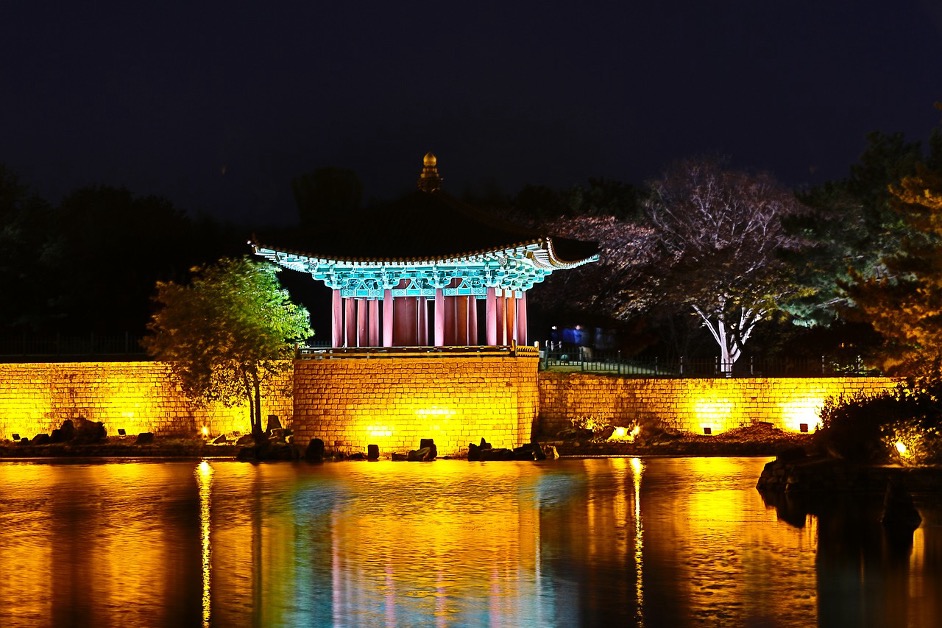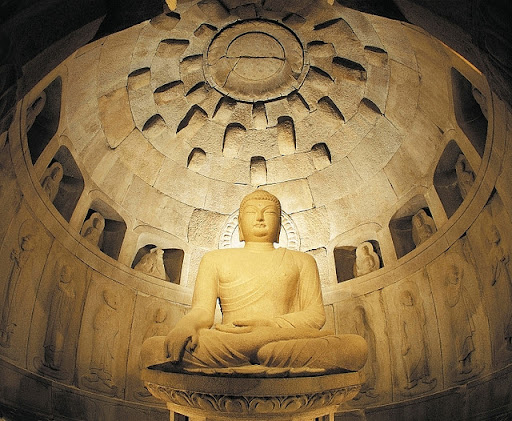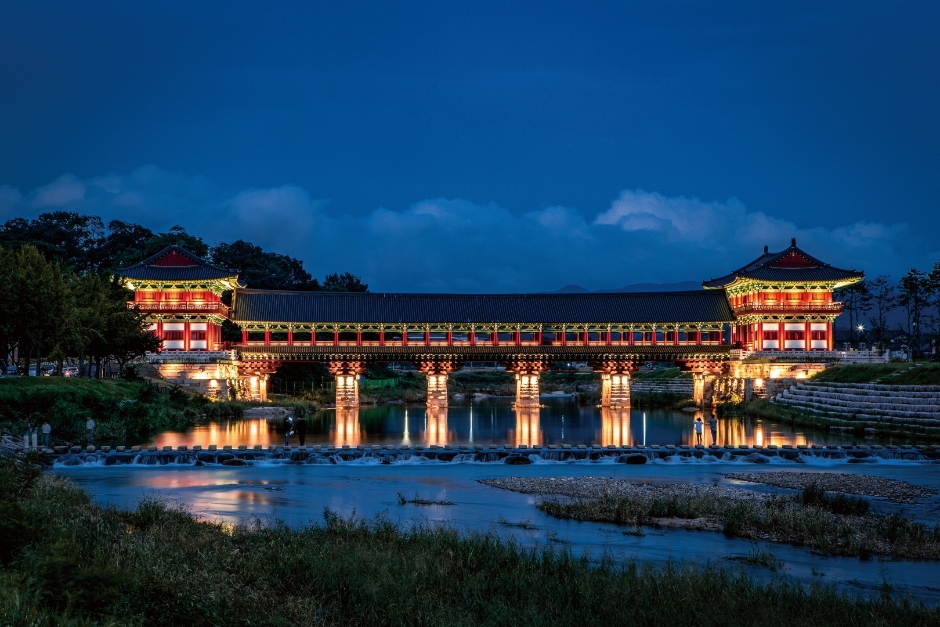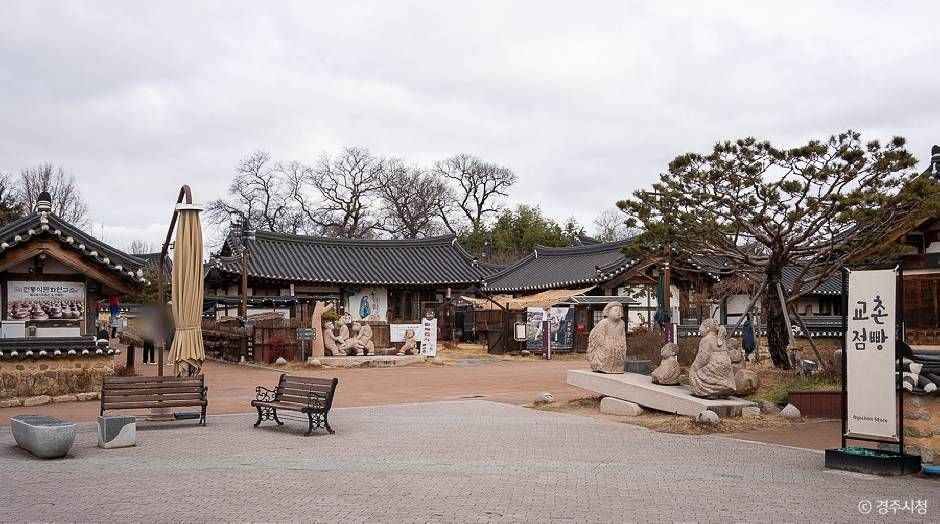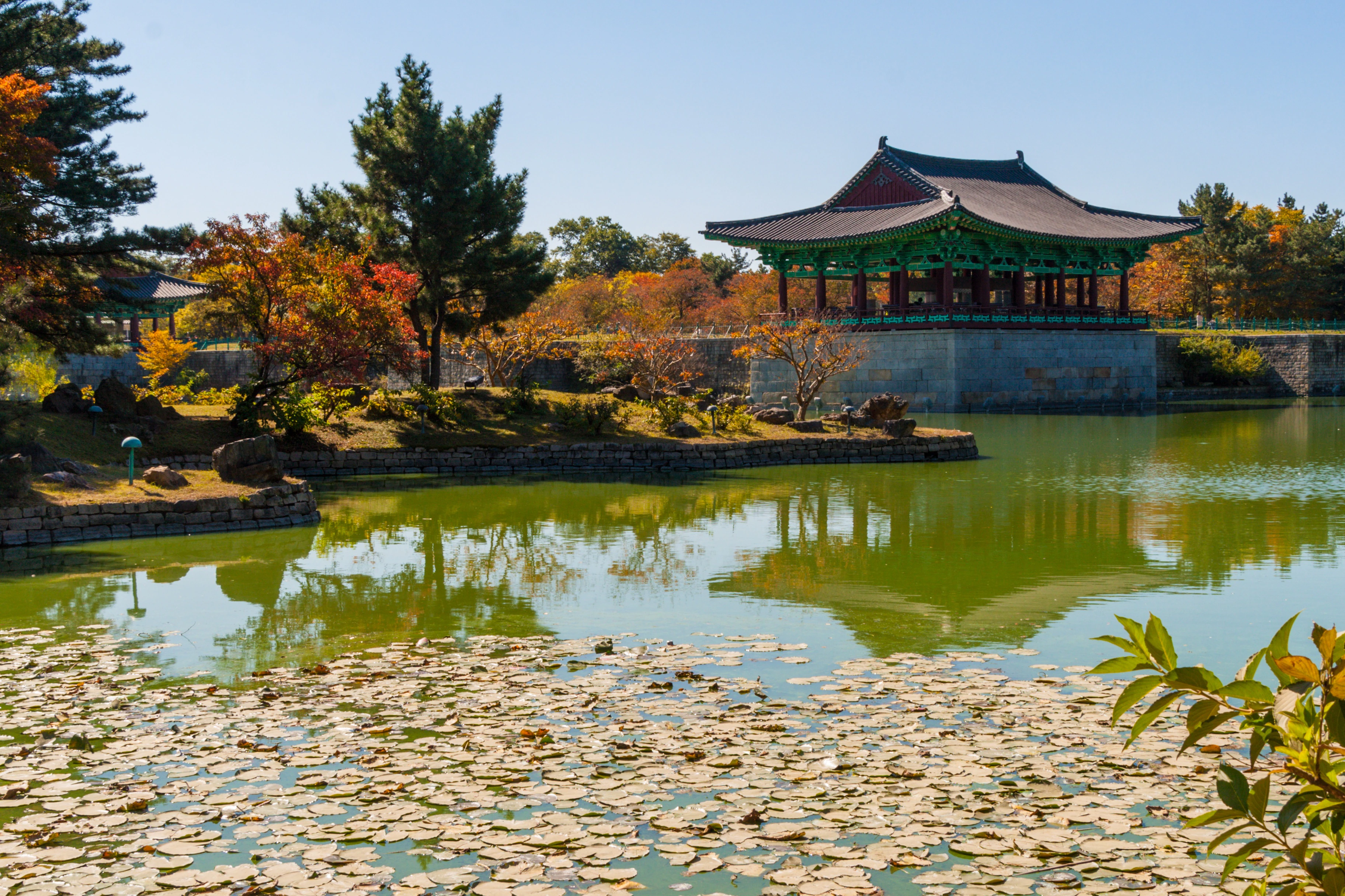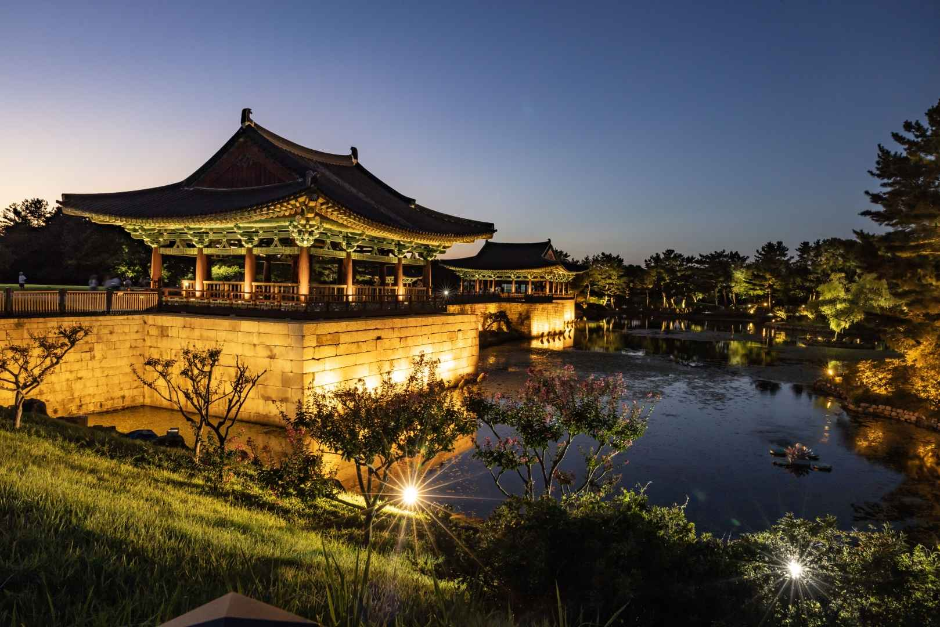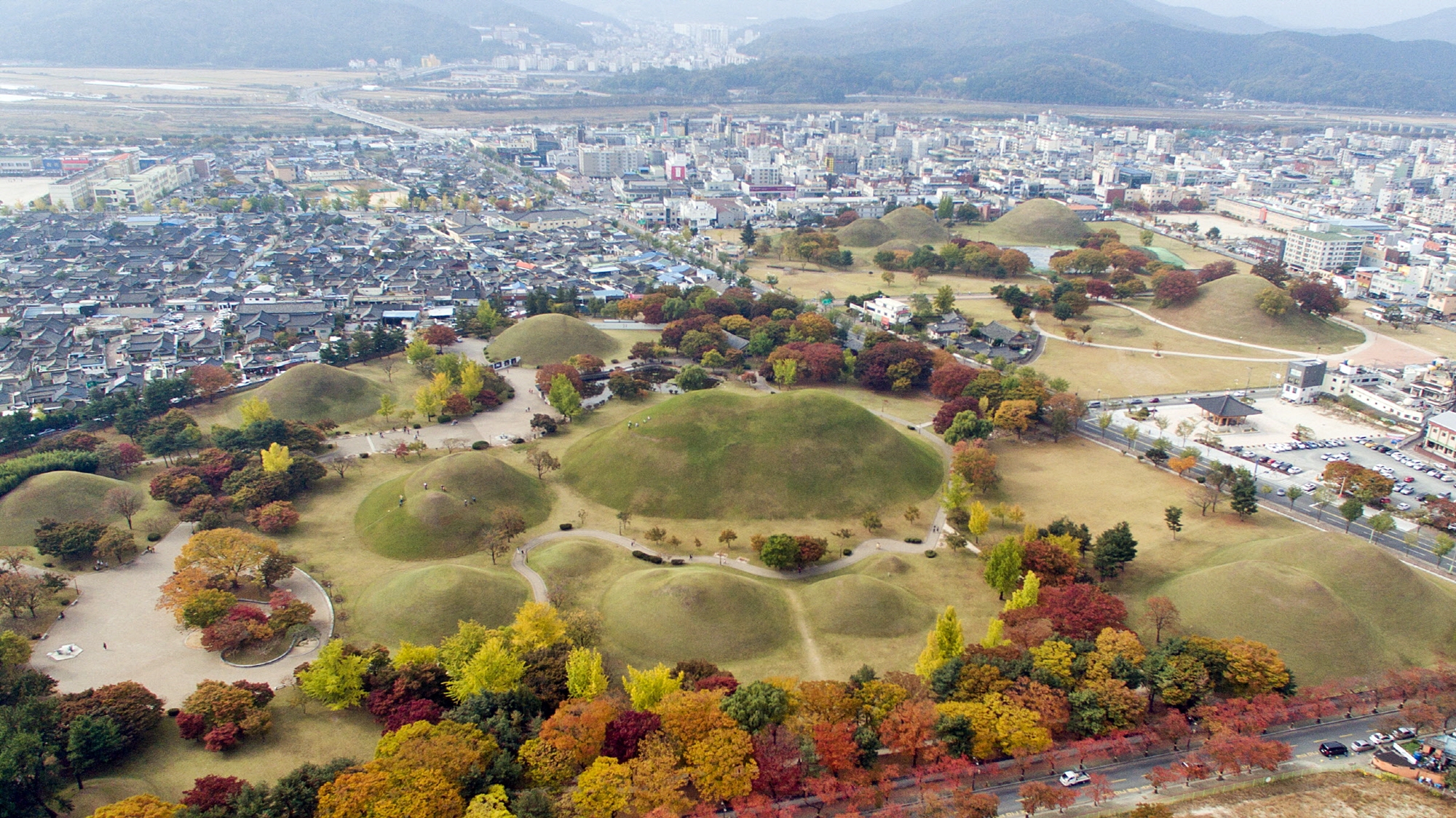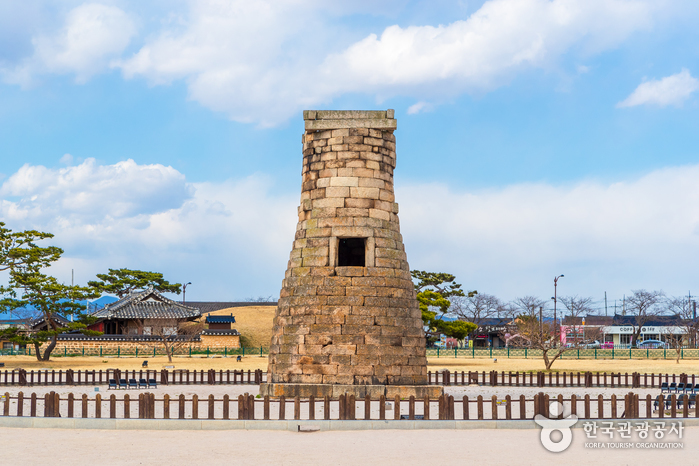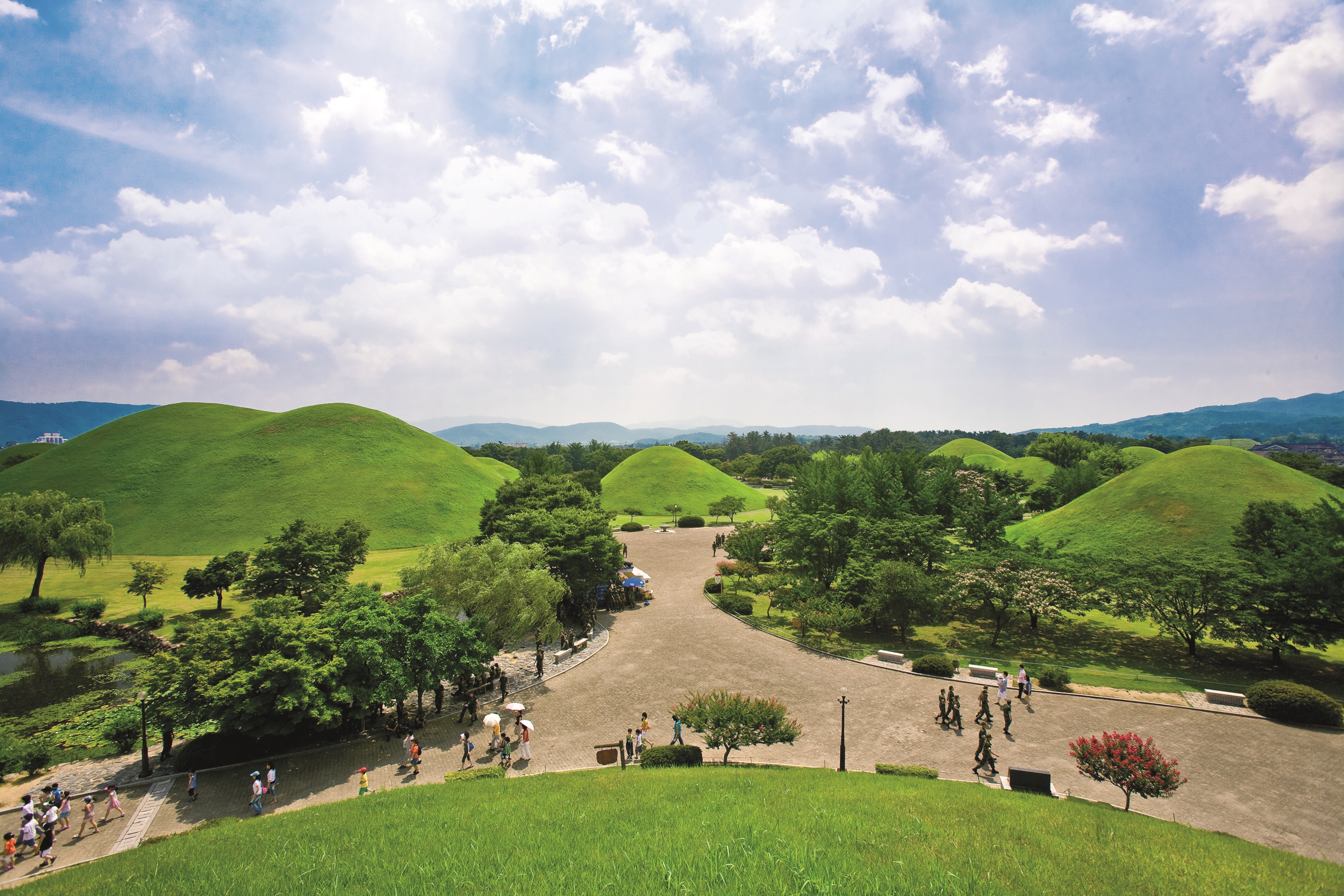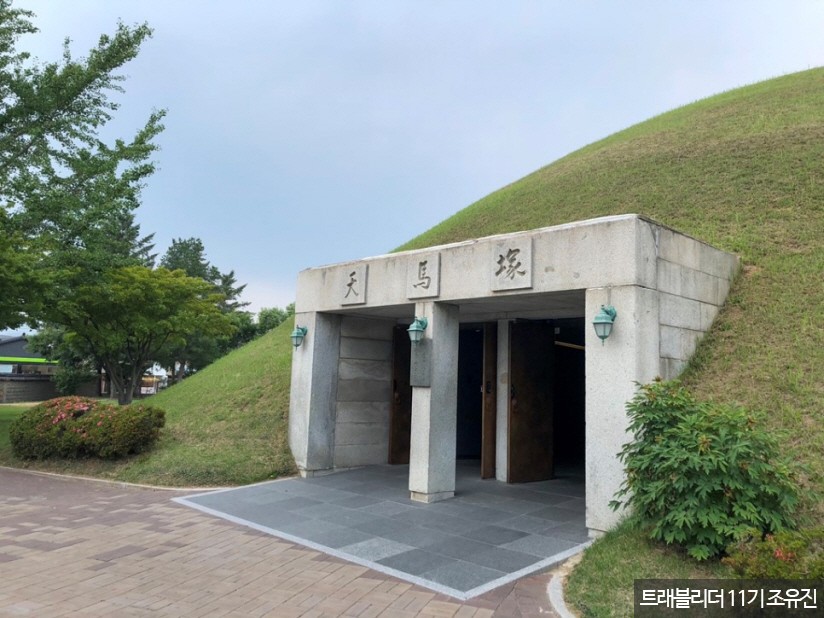Day 17
- Arrive from Busan (1 hour drive) by car in the morning
Gyeongju is also called the ‘museum without walls’ because of its many historical sites. It was the capital of the ancient kingdom of Silla, which ruled most of the Korean Peninsula for nearly a millennium.
Bulguksa Temple
Bulguksa temple is an important Buddhist temple aging from the Silla kingdom and built somewhere between 514-540 and rebuilt in the 8th century. You can also do a temple stay here, but it is more hostel-like than the one in Haeinsa. It is currently the head temple of the Jogye order and contains six National treasures, which you can find more detail on on Wikipedia. (National Treasure is a national-level designation within the heritage preservation system of South Korea for tangible objects of significant artistic, cultural, and historical value.) The temple is classified as Historic and Scenic Site No. 1 by the South Korean government and is a UNESCO World Heritage Site.
Bulguksa Temple
Seokguram Grotto
Seokguram is an artificial grotto constructed of granite that comprises an antechamber, a corridor and a main rotunda. It is located on the slopes of Tohamsan Mountain, about 4 km east of Bulguksa Temple. It enshrines a monumental statue of the Sakyamuni Buddha looking out to sea with his left hand in dhyana mudra, the mudra of concentration, and his right hand in bhumisparsa mudra, the earth-touching mudra position. Together with the portrayals of devas, bodhisattvas and disciples, sculpted in high and low relief on the surrounding walls, the statues are considered to be a masterpiece of East Asian Buddhist art. The domed ceiling of the rotunda and the entrance corridor employed an innovative construction technique that involved the use of more than 360 stone slabs. Seokguram Grotto portrays the enlightenment of Buddha and Bulguksa Temple represents the Buddhist utopia taking its form in the terrestrial world. The two sites are closely linked physically, historically and culturally and all of their key components are included within the boundaries of the property.
Woljeonggyo Bridge
After the temple, you can move on to the center of Gyeongju to see the Woljeonggyo Bridge, which is a beautiful stone bridge over the river. Like everything, it was also built in the Silla dynasty, burnt down (also like everything) and later rebuilt. It is mainly a stunning view, also during night time, so maybe we should come back here later.
Lunch in Gyochon
Gyochon is a traditional village in Gyeongju with many traditional houses, restaurants and tea houses. The village centers around the Gyeongju Choi Clan, a family known to have maintained their wealth for over 12 generations, producing many important people. Visitors can learn about the lifestyle and spending habits that enabled the family to do this. The village is also home to the site of Yoseokgung, the house of Silla Princess Yoseok. It is recommended to try the Gyeongju Gyodong Beopju Liquor, a traditional liquor brewed in the village. This seems like a good place to get some food and chill for a bit.
Gyochon Village
Donggung Palace and Wolji Pond
Donggung Palace is the only palace where visitors can get a glimpse of the palace of the thousand-year Silla Kingdom The palace, along with other secondary palaces, was used as the eastern palace where the prince lived, and banquets were held during auspicious events or to welcome important guests. It is also where King Gyeongsun of Silla invited King Wang Geon of Goryeo and had a feast to complain about the critical situation in 931 after being invaded by Gyeon Hwon. After unifying the three kingdoms, Silla’s King Munmu dug a large pond in the 14th year of his reign (674), creating three islands in the center of the pond along with a 12-peaked mountain to the northeast. Beautiful flowers and trees were planted here, and rare birds and animals were raised. In the Samguksagi (History of the Three Kingdoms) from the Goryeo dynasty, there is only a record of Imhaejeon Hall and no mention of Anapji Pond. After Silla fell and the place fell into ruins during the Goryeo and Joseon dynasties, poets and calligraphers looked at the pond and recited a line of poetry that says, “The once splendid palace is gone, and only geese and ducks fly in.” That’s why the place is called Anapji, using the letters ‘an’ for wild geese and ‘ab’ for ducks. In the 1980s, pottery fragments with the inscription “Wolji” were excavated, and it was confirmed that this area was originally called “Wolji,” which means “a pond that reflects the moon.” And the name Anapji was changed to Wolji Pond afterwards.
Cheomseongdae and Tombs
Cheomseongdae, the oldest existing astronomical observatory in Asia, and the Ancient Tombs are located closely together.
Cheomseongdae Observatory, constructed during the reign of Queen Seondeok (r. 632-647), is one of the landmarks of Gyeongju. The observatory was built in a cylinder shape at approximately 9 meters in height. The observatory consists of 365 stones, symbolizing the number of days in a year. The rocks are piled in 27 layers symbolizing the 27th ruler, Queen Seondeok, and the days in a lunar month by adding the of two rock layers on top.
Daereungwon Ancient Tombs are one of the most well-known sights in Gyeongju, a history park home to 23 small and large ancient tombs, including 5 royal tombs. The area is dotted with tranquil trails among the tombs like the largest tomb in Hwangnam-dong, Hwangnamdaechong Tomb; Cheonmachong Tomb, the place where Cheonmado, a saddle flap painting, was excavated from; and the tomb of King Michu, nicknamed the “Tomb of the Bamboo Warrior.” Cheonmachong Tomb, excavated in 1973, has a height of 12.7 meters and a diameter of 50 meters. Its excavation unearthed many artifacts, such as the famous Gold Crown from Cheonmachong Tomb. Its name comes from Cheonmado, a mudguard saddle flap with a painting of a heavenly horse. Cheonmachong Tomb is the only tomb in the Daereungwon Ancient Tombs to be opened to the public. The tomb is thought to have been constructed between the late 5th century and early 6th century. Artifacts excavated from the tomb include a gold crown, gold cap, gold waist belt, gold diadem, and gilt-bronze shoes worn by the buried. The gold crown, in particular, is known as the largest and the most elaborate of all gold crowns unearthed in Korea. The artifacts themselves can be found in Gyeongju National Museum.
Hwangnidan Street
This beautiful street is home to numerous restaurants, cafes, photo studios, and shops housed in traditional hanok buildings, making it popular among the younger generations in Korea. The street also demonstrates newtro aesthetics due to the remaining old and worn buildings built during the 1960s and the ’70s. Hwangnidan Street is near Cheomseongdae Observatory, Daereungwon Ancient Tombs, and other major tourist sites, allowing the street to become a popular Gyeongju attraction as well.
Hwangnidan Street
Optional: Yangdong folk village
If there is miraculously time left, we can visit the Yangdong folk village, which is a traditional village from the Joseon dynasty and a UNESCO World Heritage Site. It is a little bit out of the way, but it is one of the two most famous folk villages in Korea (the other one being Hahoe village near Andong, which we will definitely visit).
Day 18
- Leave Gyeongju in the morning to go to Andong (1.5 hour drive).
Accommodation
Gyeongju Tourist Hotel
- Check-in from 15.00, check-out before 11.00
- Address: Taejong-ro 699beon-gil 3, 38157 Gyeongju, South Korea
